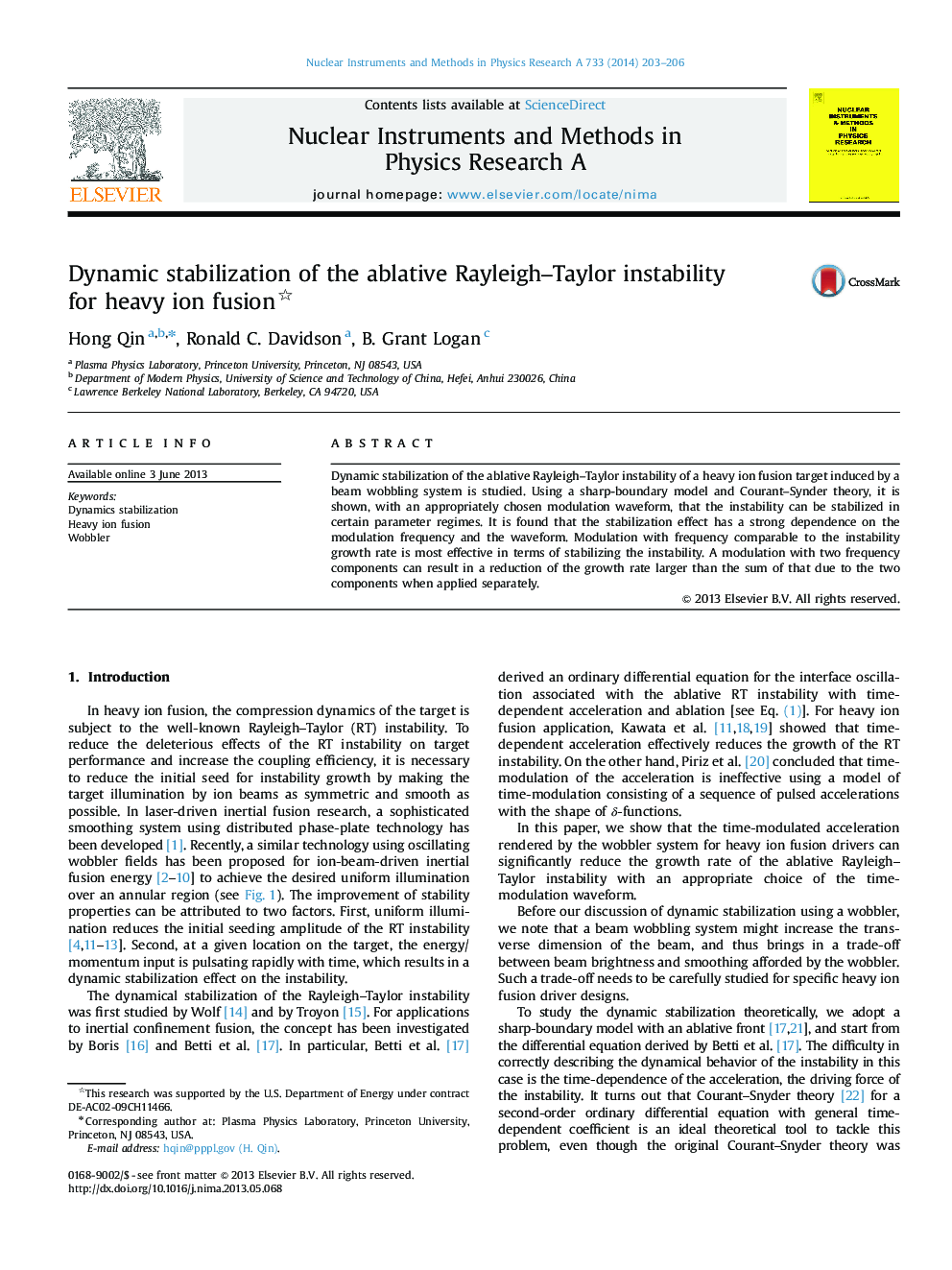| Article ID | Journal | Published Year | Pages | File Type |
|---|---|---|---|---|
| 1822715 | Nuclear Instruments and Methods in Physics Research Section A: Accelerators, Spectrometers, Detectors and Associated Equipment | 2014 | 4 Pages |
Abstract
Dynamic stabilization of the ablative Rayleigh–Taylor instability of a heavy ion fusion target induced by a beam wobbling system is studied. Using a sharp-boundary model and Courant–Synder theory, it is shown, with an appropriately chosen modulation waveform, that the instability can be stabilized in certain parameter regimes. It is found that the stabilization effect has a strong dependence on the modulation frequency and the waveform. Modulation with frequency comparable to the instability growth rate is most effective in terms of stabilizing the instability. A modulation with two frequency components can result in a reduction of the growth rate larger than the sum of that due to the two components when applied separately.
Keywords
Related Topics
Physical Sciences and Engineering
Physics and Astronomy
Instrumentation
Authors
Hong Qin, Ronald C. Davidson, B. Grant Logan,
